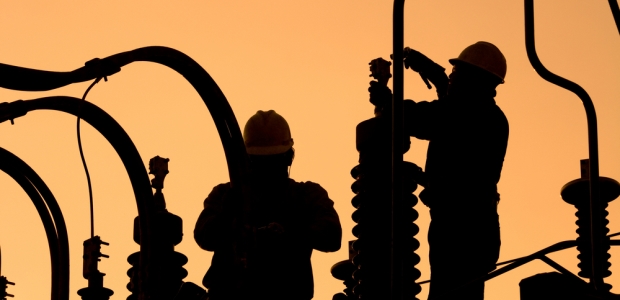
Arc Flash Hearing Protection
What requirements must a hearing protector meet for arc flash protection?
Arc flash is the term describing an extremely dangerous electrical hazard when uncontrolled current passes between two conductors. When voltage is high enough (over 480V), the intense heat of the arc flash can create a serious hazard for workers in the arc flash zone; temperatures can reach 35,000 degrees Fahrenheit, and the impulse sound resulting from the explosive expansion from the arc can exceed 160 dB. Shrapnel from an arc blast can be propelled at more than 700 mph. Each year, more than 2,000 persons are treated for arc flash burns (NFPA 70E-2015, Annex K).
The National Fire Protection Association publishes its NFPA 70E, Standard for Electrical Safety in the Workplace,1 which defines arc flash boundary zones and recommended PPE (personal protective equipment) for each zone. The following FAQs summarize the requirements for hearing protection defined in NFPA 70E-2015.
Are hearing protectors required for arc flash hazard zones, according to NFPA 70E?
Yes, the 2015 standard requires workers in an arc flash hazard zone to wear insert-type hearing protection (ear plugs), as defined in Section 130.7(C)(5)).
Does NFPA certify or approve particular hearing protectors as being compliant with NFPA 70E-2015?
No, the NFPA does not certify or approve any PPE. Any manufacturer claims that a particular piece of PPE has been tested to NFPA standards, or has been certified by NFPA, are inaccurate and misleading.
Does a hearing protector need to have an arc flash rating to comply with NFPA 70E-2015?
No. Arc ratings are required for primary PPE, such as arc-rated clothing. But arc ratings are not defined for hearing protection. Under the NFPA 70E-2015 standard, all exposed skin is to be covered with arc-rated clothing, such that an ear plug would not be the primary protection for an arc flash burn. The purpose of the ear plug is to provide hearing protection only, not to provide any burn protection.
Are Howard Leight ear plugs flame resistant?
In the 2015 revision of 70E, NFPA no longer uses the Flame Resistant (FR) designation for qualified PPE, preferring instead to designate some required PPE as "arc-rated" (AR). Hearing protection in an arc flash boundary zone requires neither FR nor AR designation. However, for other applications, some users may be interested to know all Howard Leight ear plugs are tested against an ISO test method to measure ignitability and meet its requirements for flame resistance.
Can ear muffs be worn in arc hazard zones?
NFPA 70E-2015 specifically defines ear canal inserts (ear plugs) as the required protection in all arc flash zones (see Table 130.7(C)(16)).
Can an ear plug provide good protection for an explosive sound that can reach 160 dB, such as an arc blast?
Yes. If properly inserted and well fitted, an ear plug may provide good protection for an explosive blast. Whereas OSHA defines 90 dBA as the permissible exposure limit for an 8-hour time-weighted average noise exposure, there are no general industry standards for permissible exposures for an impulse/impact noise. However, many jurisdictions not covered by OSHA require impulse noise to be reduced below 137-140 dB for a single-event exposure (explosion or blast), a protected exposure level that can be accomplished with properly fitted hearing protection.
References
1. National Fire Protection Association, NFPA 70E®: Standard for Electrical Safety in the Workplace®, 2015 edition.
2. EN 352-2:2002. Hearing protectors, General requirements Part 2: Ear-plugs.
This article originally appeared in the September 2015 issue of Occupational Health & Safety.
About the Author
Brad Witt, MA, CCC-A, is the Director of Hearing Conservation for Honeywell Safety Products, the manufacturer of Howard Leight® hearing protection products. He holds a B.S. in Communication Disorders from Brigham Young University, and an M.A. in Audiology from Northwestern University. For 14 years, he managed a hearing conservation practice in California, providing OSHA-standard services at 175 locations. He has served as president of the National Hearing Conservation Association (NHCA) and has presented more than 250 hearing conservation seminars on behalf of Howard Leight during the past eight years in 18 countries. Contact him by e-mail at [email protected].